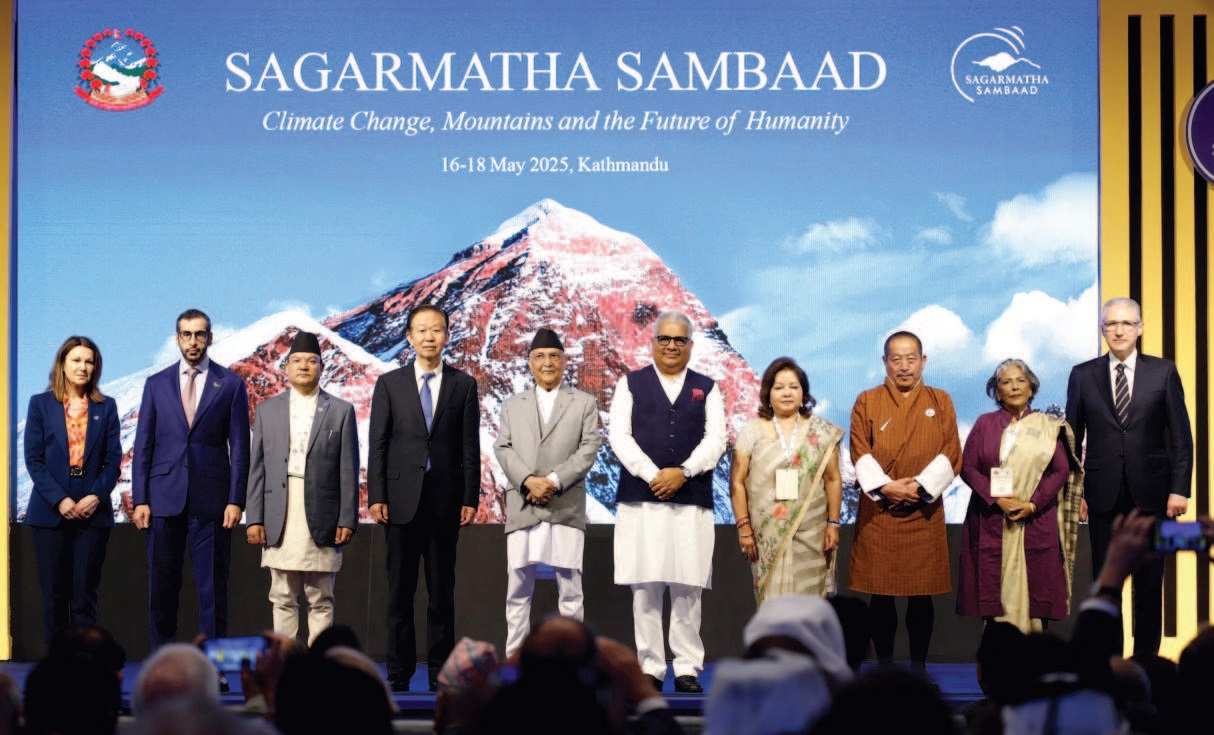
Sagarmatha Sambad 2082: Why It Matters for Nepal and the World
Take a look at the global numbers on carbon emissions—China, the U.S., and India together release nearly 46.2% of the world’s total. Meanwhile, around a hundred smaller countries, including Nepal, contribute just 2.9%. Nepal’s own share? Less than 0.04%.
Rather than adding to the problem, Nepal helps reduce it through carbon storage and forest conservation. But here’s the irony: those contributing the least—countries like Nepal—are among the ones hit hardest by climate change. It’s like suffering from a poison you didn’t consume.
How Climate Change is Hitting Nepal
The signs are hard to miss. Glaciers in Nepal’s Himalayan region are melting fast. Glacial lake bursts are damaging lives and property. Rainfall no longer follows predictable patterns. Sometimes it pours when it shouldn’t; other times, droughts drag on for weeks.
Floods and landslides are becoming more common, and entire seasons feel off track. These shifts are affecting almost every aspect of life in Nepal, from farming and tourism to water sources and public health.
A Closer Look at the Impact
Let’s break down what’s happening:
-
Rivers and hydropower projects are struggling with irregular water flow
-
Access to clean water and breathable air is shrinking
-
Rising temperatures are triggering diseases like dengue and cholera
-
Native plants and animals are disappearing or relocating
-
Even power generation is facing disruption due to snowmelt and unpredictable rainfall
The Crisis in Agriculture
More than 60% of Nepal’s population depends on farming. But agriculture is now one of the most vulnerable sectors. Crop cycles are no longer reliable. Farmers can’t count on seasonal rain to plant or harvest on time.
Late rains, hailstorms, and unexpected frosts are destroying crops. Pests and new crop diseases are spreading. As a result, farmers are being forced to use more chemical fertilizers and pesticides just to maintain output.
This might seem like a quick fix, but it’s taking a toll on soil quality and public health. And because traditional knowledge is being pushed aside, many farmers are feeling uncertain and left behind.
Ripple Effects on Food Security
Reduced yields mean rural and mountain communities are suffering most. Food supply systems across the country are being stretched.
Other growing problems include:
-
Shortage of irrigation water
-
Rising production costs
-
Increased pressure on farmers’ livelihoods
-
Risk to food affordability, especially for low-income groups
If this trend continues, it could slow down poverty reduction, stall development efforts, and make Nepal’s national goals harder to reach.
Why Nepal is Hosting Sagarmatha Sambad
From Jestha 2–4, the Government of Nepal is organizing Sagarmatha Sambad 2082. This event isn’t just symbolic—it’s a direct call to the world from the base of Mount Everest. The country that’s watching its snowy peaks turn into bare rocks is stepping up to lead a global conversation.
The Sambad brings together climate experts, government officials, and global thinkers. It’s a platform to share ideas, research, and stories that matter. The aim is to shape stronger global action on climate change, because time is running out.
Nepal’s Opportunity to Lead
Many experts believe that amid the growing climate risks, there are new paths opening up. With smart diplomacy, firm political commitment, and unity across sectors, Nepal can turn this challenge into an opportunity.
Sagarmatha Sambad could be the start. It’s Nepal’s chance to:
-
Represent low-emission countries at global forums
-
Speak out about the damage caused by major polluters
-
Call for fair climate compensation
-
Push for stronger accountability in international policy
A Bigger Role on the Global Stage
Nepal can step up its leadership through platforms like:
-
ICIMOD
-
BIMSTEC
-
SAARC
-
BBIN
By raising its voice in these spaces, Nepal can share its climate experience and represent other countries facing similar problems. It can also push for changes in how global climate finance and aid are distributed.
Building a Greener Future at Home
Nepal isn’t just asking others to act—it’s ready to lead by example. The country can show the world what sustainable development looks like by investing in:
-
Green education systems
-
Renewable energy
-
Climate-smart farming
-
Eco-friendly infrastructure
-
Forest preservation and carbon trading
-
Organic and mountain-based tourism
-
Clean, breathable rural environments
These initiatives help the environment and create jobs, boost rural incomes, and protect communities.
What Needs to Happen Next
To make this vision real, Nepal needs strong political will, smart climate policies, and collaboration across all parties. If those things come together, the possibilities are wide open.
Sagarmatha Sambad isn’t just a conference—it’s a statement. If Nepal seizes this moment, it could lead to long-term leadership on global environmental issues.
Conference

